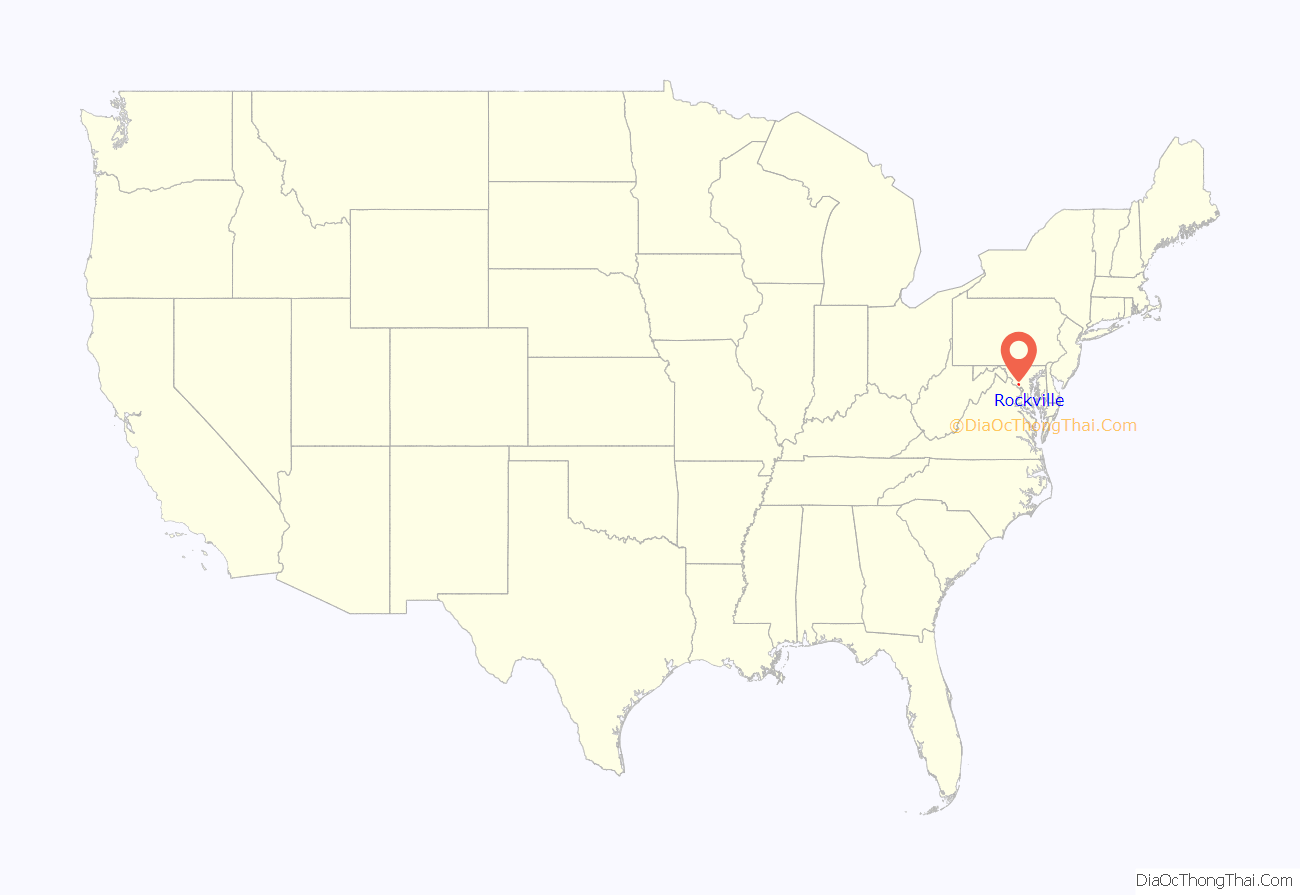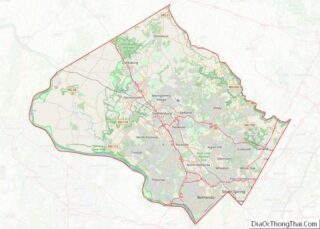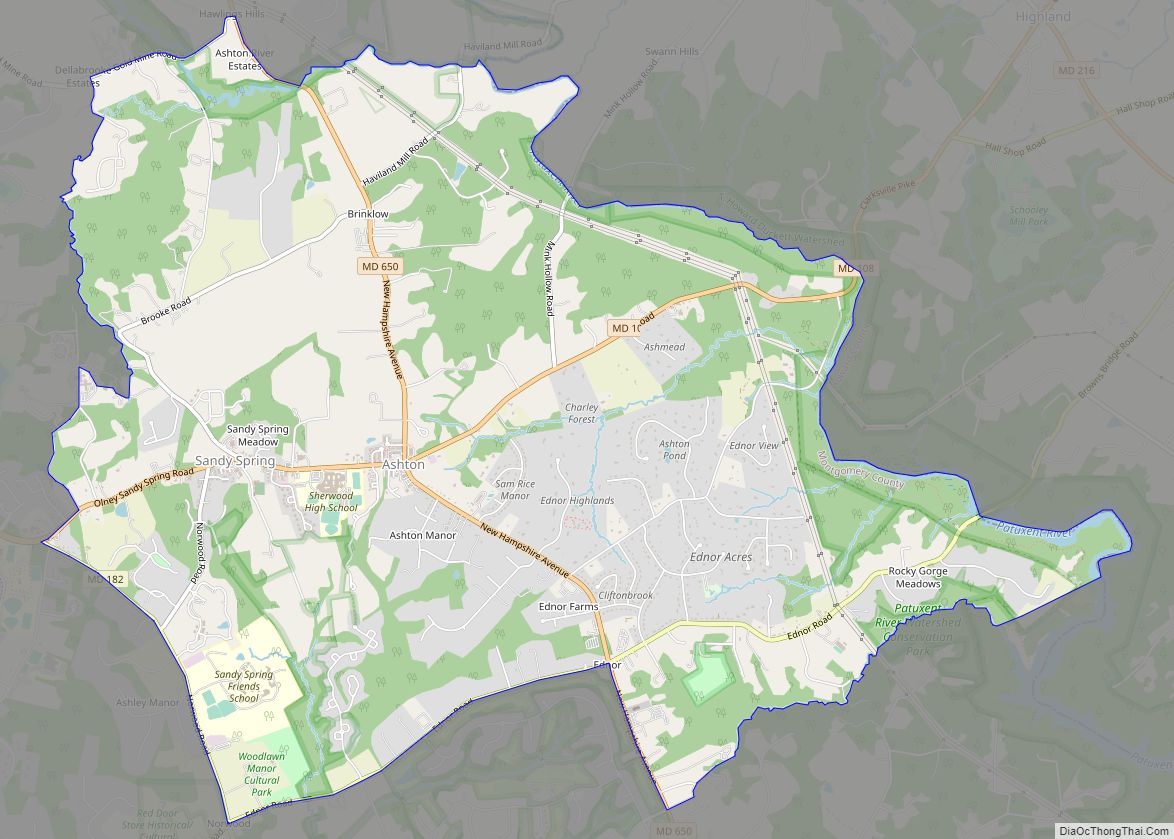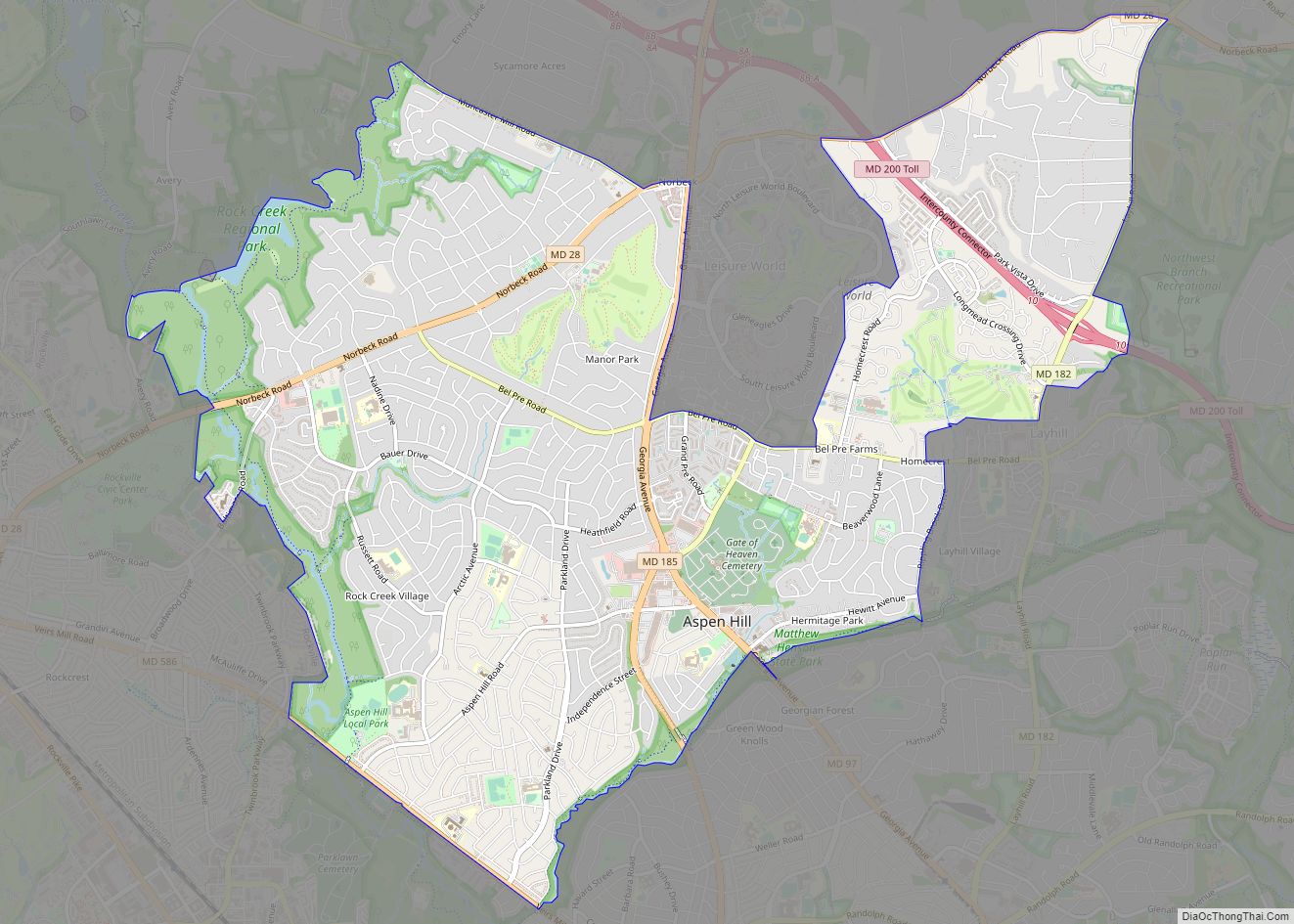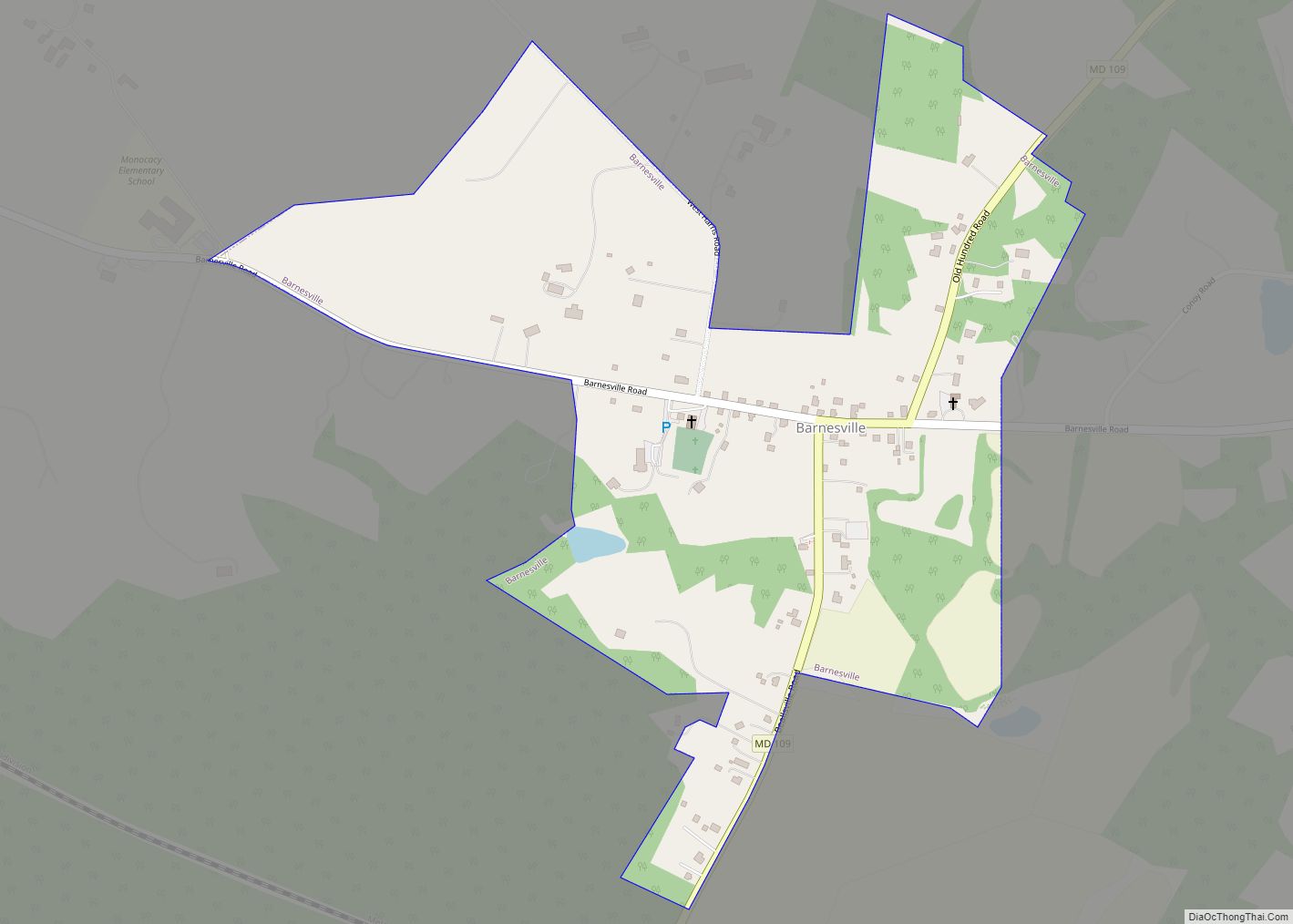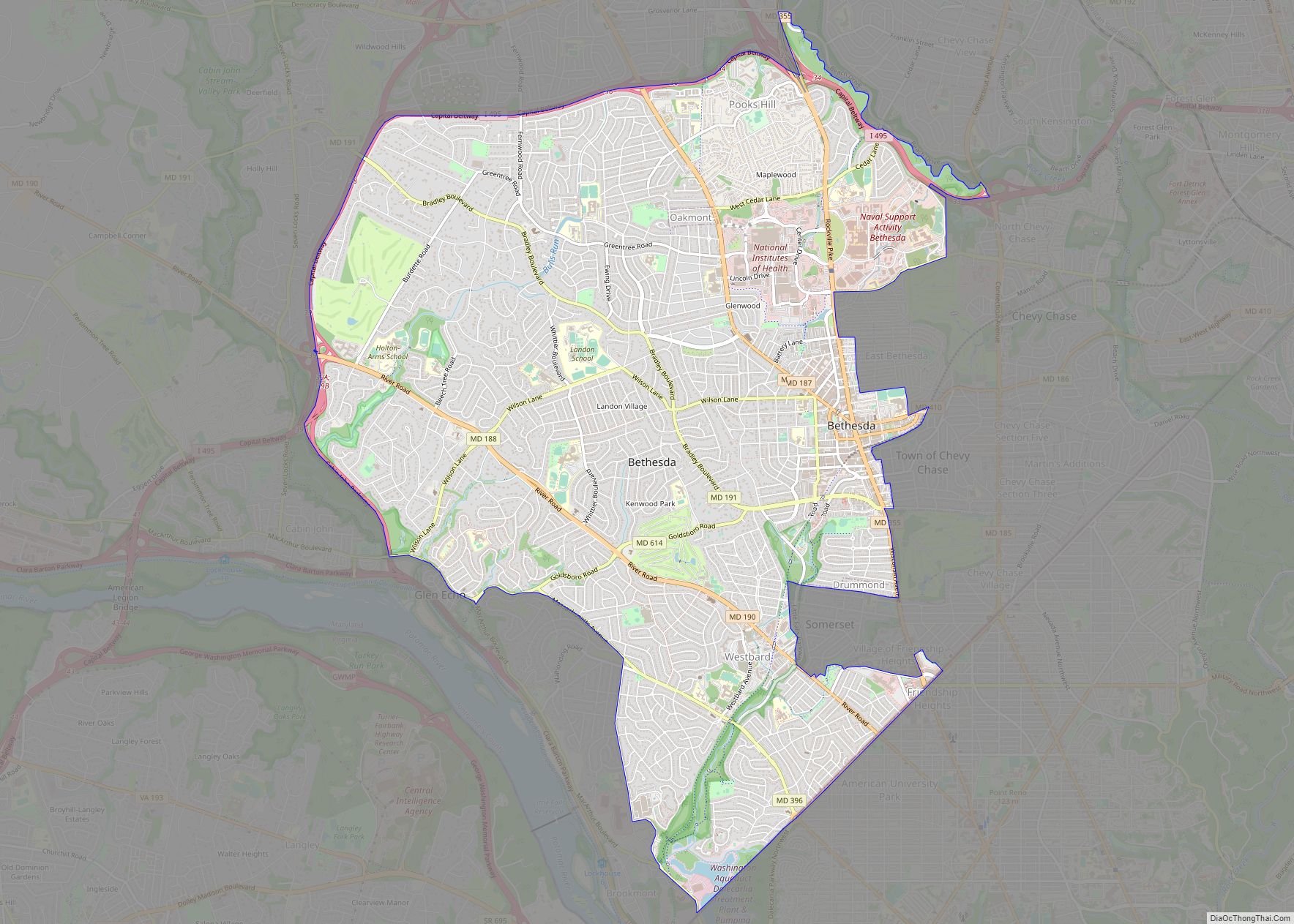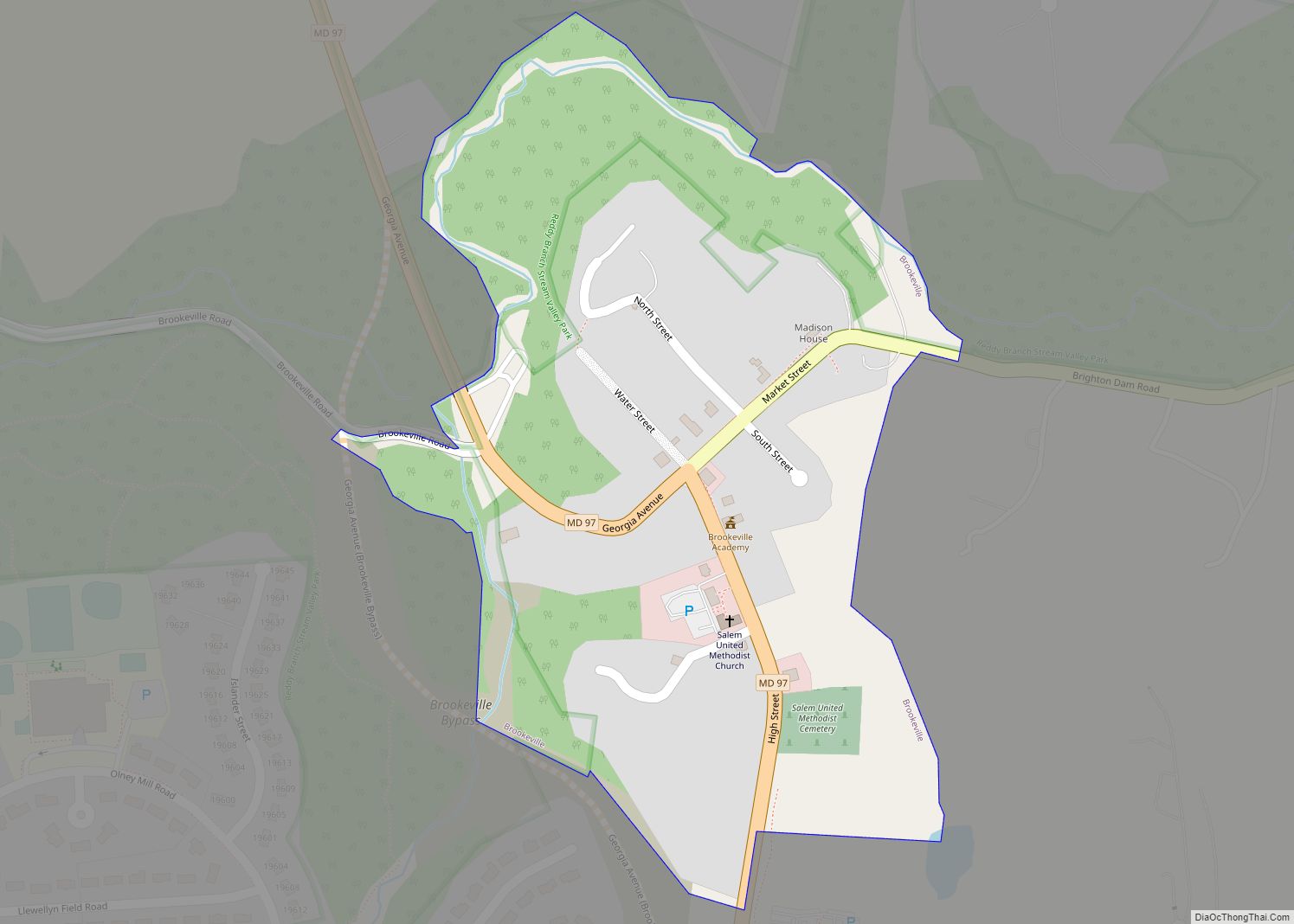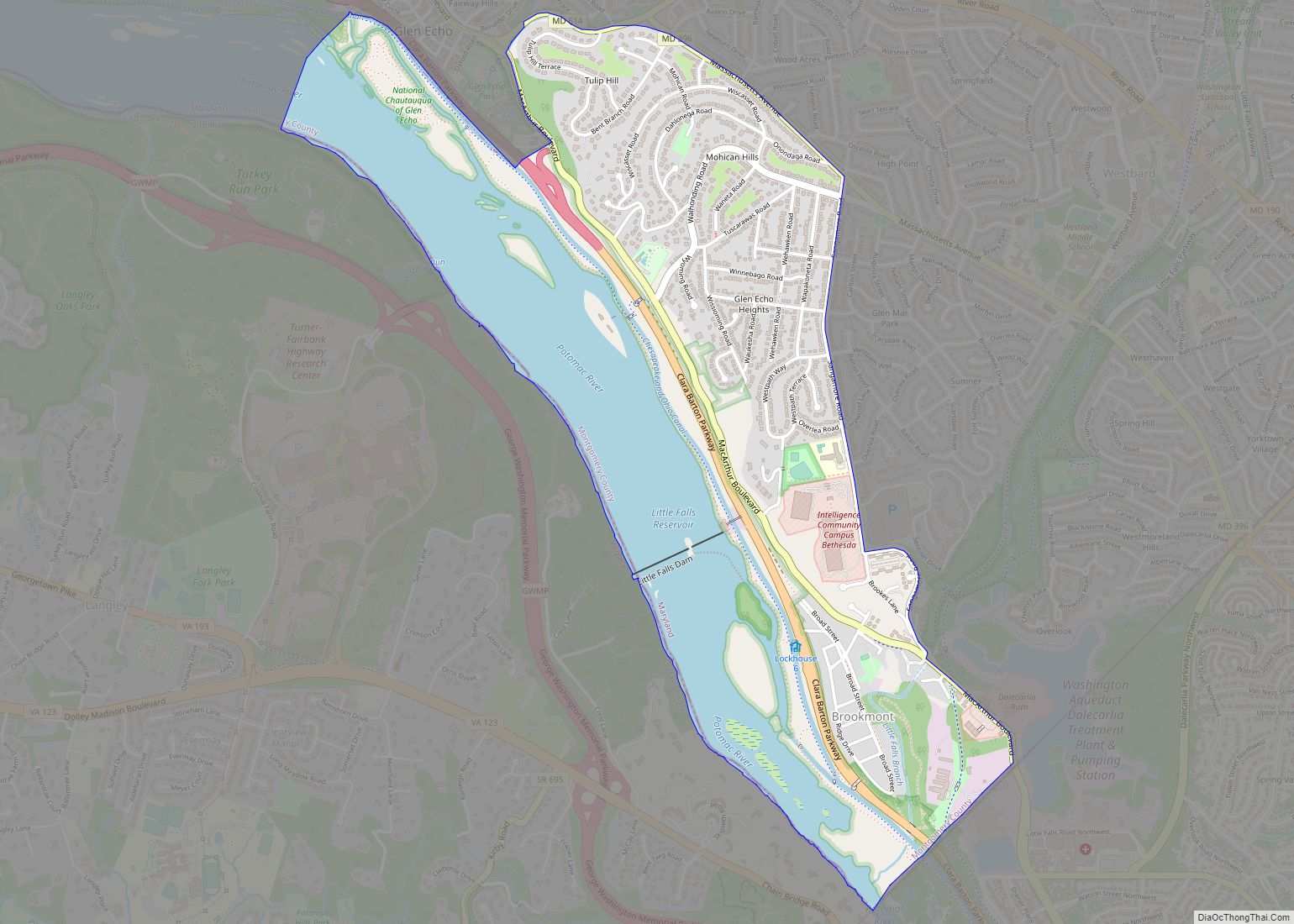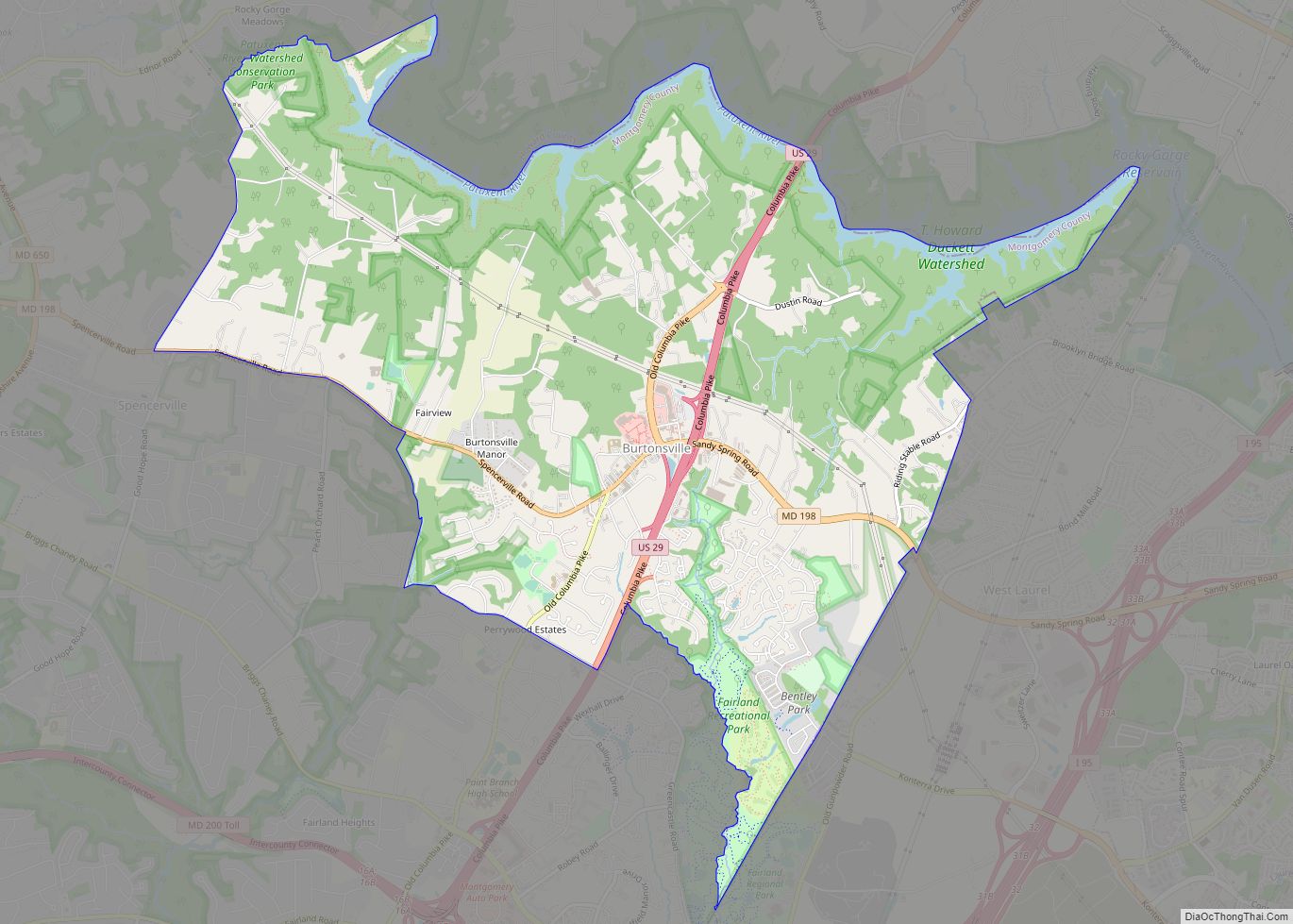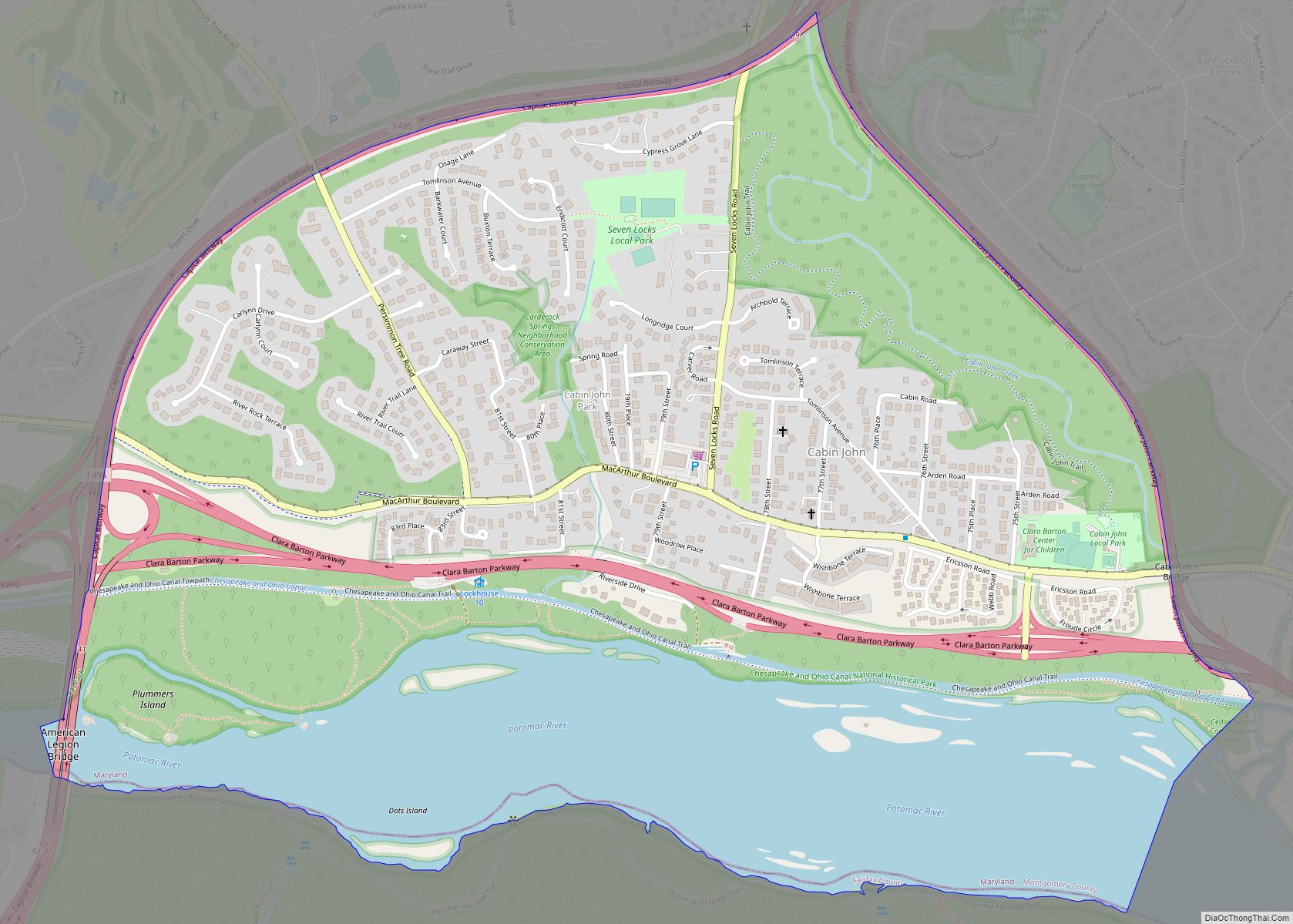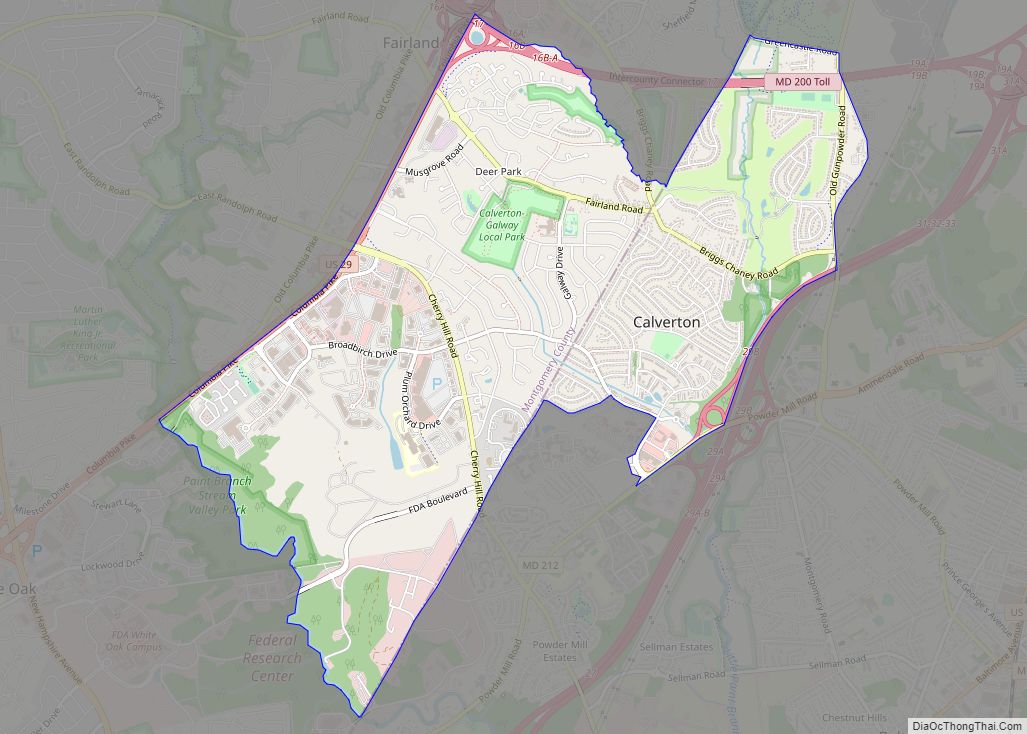Rockville is a city that serves as the county seat of Montgomery County, Maryland, United States, and is part of the Baltimore–Washington metropolitan area. The 2020 census tabulated Rockville’s population at 67,117, making it the fifth-largest community in Montgomery County.
Rockville, along with neighboring Gaithersburg and Bethesda, is at the core of the Interstate 270 Technology Corridor which is home to numerous software and biotechnology companies as well as several federal government institutions. The city, one of the major retail hubs in Montgomery County, also has several upscale regional shopping centers.
| Name: | Rockville city |
|---|---|
| LSAD Code: | 25 |
| LSAD Description: | city (suffix) |
| State: | Maryland |
| County: | Montgomery County |
| Founded: | 1803 |
| Incorporated: | 1860 |
| Elevation: | 451 ft (137 m) |
| Total Area: | 13.64 sq mi (35.33 km²) |
| Land Area: | 13.60 sq mi (35.23 km²) |
| Water Area: | 0.04 sq mi (0.09 km²) |
| Total Population: | 67,117 |
| Population Density: | 4,933.62/sq mi (1,904.92/km²) |
| ZIP code: | 20847-53 & 20857 |
| FIPS code: | 2467675 |
| GNISfeature ID: | 0586901 |
| Website: | www.RockvilleMD.gov |
Online Interactive Map
Click on ![]() to view map in "full screen" mode.
to view map in "full screen" mode.
Rockville location map. Where is Rockville city?
History
Early history
Situated in the Piedmont region and crossed by three creeks (Rock Creek, Cabin John Creek, and Watts Branch), Rockville provided an excellent refuge for semi-nomadic Native Americans as early as 8000 BC. By the first millennium BC, a few of these groups had settled down into year-round agricultural communities that exploited the native flora, including sunflowers and marsh elder. By AD 1200, these early groups (dubbed Montgomery Indians by later archaeologists) were increasingly drawn into conflict with the Senecas and Susquehannocks who had migrated south from Pennsylvania and New York. Within the present-day boundaries of the city, six prehistoric sites have been uncovered and documented, along with numerous artifacts several thousand years old. By 1700, under pressure from European colonists, the majority of these original inhabitants had been driven away.
The indigenous population carved a path on the high ground, known as Sinequa Trail, which is now downtown Rockville. Later, the Maryland Assembly set the standard of 20 feet for main thoroughfares and designated the Rock Creek Main Road or Great Road to be built to this standard. In the mid-18th century, Lawrence Owen opened a small inn on the road. The place, known as Owen’s Ordinary, took on greater prominence when, on April 14, 1755, Major General Edward Braddock stopped at Owen’s Ordinary on a start of a mission from George Town (now Washington, D.C.) to press British claims of the western frontier. The location of the road, near the present Rockville Pike, was strategically located on higher ground, making it dry year-round.
18th century
The first land patents in the Rockville area were obtained by Arthur Nelson between 1717 and 1735. Within three decades, the first permanent buildings in what would become the center of Rockville were established on this land. Still a part of Prince George’s County at this time, the growth of Daniel Dulaney’s Frederick Town prompted the separation of the western portion of the county, including Rockville, into Frederick County in 1748.
Being a small, unincorporated town, early Rockville was known by a variety of names, including Owen’s Ordinary, Hungerford’s Tavern, and Daley’s Tavern. The first recorded mention of the settlement later known as Rockville dates to the Braddock Expedition in 1755. On April 14, one of the approximately 2,000 men who were accompanying General Braddock through wrote the following: “we marched to larance Owings or Owings Oardianary, a Single House, it being 18 miles and very dirty.” Owen’s Ordinary was a small rest stop on Rock Creek Main Road (later the Rockville Pike), which stretched from George Town to Frederick Town, and was then one of the largest thoroughfares in the colony of Maryland.
On September 6, 1776, the Maryland Constitutional Convention agreed to a proposal introduced by Thomas Sprigg Wootton wherein Frederick County, the largest and most populous county in Maryland, would be divided into three smaller units. The southern portion of the county, of which Rockville was a part, was named Montgomery County. The most populous and prosperous urban center in this new county was George Town, but its location at the far southern edge rendered it worthless as a seat of local government. Rockville, a small but centrally located and well-traveled town, was chosen as the seat. At the time, Rockville did not have a name; it was generally called Hungerford’s Tavern, after the well-known tavern in it. After being named the county seat, the village was referred to by all as Montgomery Court House. The tavern served as the county courthouse, and it held its first such proceedings on May 20, 1777.
In 1784, William Prather Williams, a local landowner, hired a surveyor to lay out much of the town. In his honor, many took to calling the town Williamsburg. In practice, however, Williamsburg and Montgomery Court House were used interchangeably. Rockville came to greater prominence when Montgomery County was created and later when George Town was ceded to the federal government to create the District of Columbia.
19th century
A proposal to name the town Wattsville, after the nearby Watts Branch, failed because the stream was later considered too small to give its name to the town. On July 16, 1803, when the area was officially entered into the county land records with the name “Rockville,” derived from Rock Creek. Nevertheless, the name Montgomery Court House continued to appear on maps and other documents through the 1820s.
By petition of Rockville’s citizens, the Maryland General Assembly incorporated the village on March 10, 1860. During the American Civil War, General George B. McClellan stayed at the Beall Dawson house in 1862. In addition, General J.E.B. Stuart and an army of 8,000 Confederate cavalrymen marched through and occupied Rockville on June 28, 1863, while on their way to Gettysburg and stayed at the Prettyman house. Jubal Anderson Early also crossed through Rockville on his way to and from his 1864 attack on Washington.
In 1913, on the birthday of Jefferson Davis, the United Daughters of the Confederacy erected a statue near the Rockville courthouse dedicated to Confederate soldiers from Montgomery County. The monument was removed in 2017 as part of a wave of removals of Confederate monuments and memorials in response to the 2015 Charleston church shooting, and is now located in White’s Ferry.
In 1873, the Baltimore and Ohio Railroad arrived, making Rockville easily accessible from Washington, D.C. (See Metropolitan Branch.) In July 1891, the Tennallytown and Rockville Railway inaugurated Rockville’s first trolley service connecting to the Georgetown and Tennallytown Railway terminus at Western Avenue and Wisconsin Avenue.
Twentieth century to today
The newly opened railroad provided service from Georgetown to Rockville, connecting Rockville to Washington, D.C., by trolley. Trolley service operated for four decades, until, eclipsed by the growing popularity of the automobile, service was halted in August 1935. The Blue Ridge Transportation Company provided bus service for Rockville and Montgomery County from 1924 through 1955. After 1955, Rockville would not see a concerted effort to develop a public transportation infrastructure until the 1970s, when the Washington Metropolitan Area Transit Authority (WMATA) began work to extend the Washington Metro into Rockville and extended Metrobus service into Montgomery County. The Rockville station of Washington Metro began service on July 25, 1984, and the Twinbrook station began service on December 15, 1984. Metrobus service was supplemented by Montgomery County’s own Ride On bus service starting in 1979. MARC, Maryland’s Rail Commuter service, serves Rockville with its Brunswick line. From Rockville MARC provides service to Union Station in Washington D.C. (southbound) and, Frederick and Martinsburg, West Virginia (northbound), as well as intermediate points. Amtrak, the national passenger rail system, provides service from Rockville to Chicago and Washington D.C.
The mid-20th century saw substantial growth in Rockville, especially with the annexation of the Twinbrook subdivision in 1949, which added hundreds of new homes and thousands of new residents to the city. In 1954, Congressional Airport closed, and its land was sold to developers to build residences and a commercial shopping center. The shopping center, named Congressional Plaza, opened in 1958. These new areas provided affordable housing and grew quickly with young families eager to start their lives following World War II.
During the Cold War, it was considered safer to remain in Rockville than to evacuate during a hypothetical nuclear attack on Washington, D.C. Bomb shelters were built, including the largest one at Glenview Mansion and 15 other locations. The I-270 highway was designated as an emergency aircraft landing strip. Two Nike missile launcher sites were located on Muddy Branch and Snouffer School Roads until the mid-1970s.
From the 1960s, Rockville’s town center, formerly one of the area’s commercial centers, suffered from a period of decline. Rockville soon became the first city in Maryland to enter into a government funded urban renewal program. This resulted in the demolition of most of the original business district. Included in the plan was the unsuccessful Rockville Mall, which failed to attract either major retailers or customers and was demolished in 1994, various government buildings such as the new Montgomery County Judicial Center, and a reorganization of the road plan near the Courthouse. Unfortunately, the once-promising plan was for the most part a disappointment. Although efforts to restore the town center continue, the majority of the city’s economic activity has since relocated along Rockville Pike (MD Route 355/Wisconsin Avenue). In 2004, Rockville Mayor Larry Giammo announced plans to renovate the Rockville Town Square, including building new stores and housing and relocating the city’s library. In the past year, the new Rockville Town Center has been transformed and includes a number of boutique-like stores, restaurants, condominiums and apartments, as well as stages, fountains and the Rockville Library. The U.S. Nuclear Regulatory Commission’s headquarters is just south of the city’s corporate limits.
The city is closely associated with the neighboring towns of Kensington and the unincorporated census-designated place, North Bethesda. The Music Center at Strathmore, an arts and theater center, opened in February 2005 in the latter of these two areas and is presently the second home of the Baltimore Symphony Orchestra, and the Fitzgerald Theatre in Rockville Civic Center Park has provided diverse entertainment since 1960. In 1998, Regal Cinemas opened in Town Center and the city annexed 900 acres of land.
The city also has a brass band in the British style.
The R.E.M. song “(Don’t Go Back To) Rockville”, released in 1984, was written by Mike Mills about not wanting his girlfriend Ingrid Schorr to return to Rockville, Maryland.
In 1975, F. Scott Fitzgerald and Zelda Fitzgerald’s caskets were reinterred at St. Mary’s Catholic Church in Rockville, Maryland where his father, Edward, and a number of Key family members had been buried.
Historic places
Historic structures on the Register in and around downtown Rockville are:
- Beall–Dawson House (1815)
- Bingham-Brewer House (1821)
- Dawson Farm (1874)
- Glenview Mansion (1926)
- Montgomery County Courthouse Historic District (1939)
- New Mark Commons (1967)
- Old St. Mary’s Church (1817)
- Rockville Park Historic District (1884)
- Rockville Railroad Station (1873)
- West Montgomery Avenue Historic District (1880)
- Montrose Schoolhouse (1909)
Rockville Road Map
Rockville city Satellite Map
Geography
According to the United States Census Bureau, the city has a total area of 13.57 square miles (35.15 km), of which 13.51 square miles (34.99 km) is land and 0.06 square miles (0.16 km) is water.
Climate
The climate in this area is characterized by hot, humid summers and generally mild to cool winters. According to the Köppen Climate Classification system Rockville has a humid subtropical climate, abbreviated “Cfa” on climate maps. According to the United States Department of Agriculture, Rockville is in hardiness zone 7a, meaning that the average annual minimum winter temperature is 0 to 5 °F (−18 to −15 °C). The average first frost occurs on October 21, and the average final frost occurs on April 16.
See also
Map of Maryland State and its subdivision: Map of other states:- Alabama
- Alaska
- Arizona
- Arkansas
- California
- Colorado
- Connecticut
- Delaware
- District of Columbia
- Florida
- Georgia
- Hawaii
- Idaho
- Illinois
- Indiana
- Iowa
- Kansas
- Kentucky
- Louisiana
- Maine
- Maryland
- Massachusetts
- Michigan
- Minnesota
- Mississippi
- Missouri
- Montana
- Nebraska
- Nevada
- New Hampshire
- New Jersey
- New Mexico
- New York
- North Carolina
- North Dakota
- Ohio
- Oklahoma
- Oregon
- Pennsylvania
- Rhode Island
- South Carolina
- South Dakota
- Tennessee
- Texas
- Utah
- Vermont
- Virginia
- Washington
- West Virginia
- Wisconsin
- Wyoming
